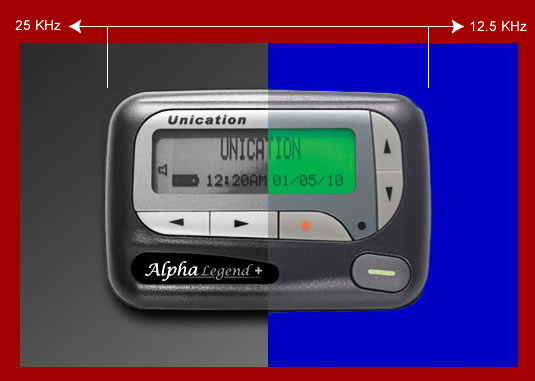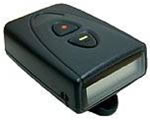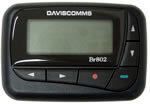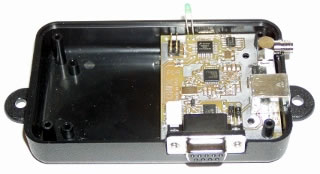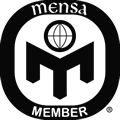BloostonLaw Telecom Update Published by the Law Offices of Blooston, Mordkofsky, Dickens, Duffy & Prendergast, LLP [Portions reproduced here with the firm's permission.] www.bloostonlaw.com |
| Vol. 13, No. 23 | June 2, 2010 |
 Tower Compliance Manual BloostonLaw has assembled a compliance manual for all tower/antenna structure owners, as well as any licensee mounting antennas on structures. The manual helps structure owners and licensees avoid FCC fines, minimize Federal and state approval delays, and minimize or avoid the potential for civil and/or criminal liability that could be associated with tower operations/accidents. The manual includes a detailed explanation of FCC, FAA and other Federal regulatory requirements so that your staff can understand the legal do’s and don’ts associated with tower construction and antenna mounting. We have also developed checklists that can be used by your employees and contractors to (1) make sure that necessary compliance steps are taken and (2) create a paper trail documenting such compliance. There are separate checklists for antenna structure owners and radio licensees that will use such structures. These checklists cover such issues as environmental protection, historic preservation, harmful RF radiation limits, interference protection, aviation safety, and Federal reporting requirements. A sample tower log is included. In recent years, tower owners have faced million dollar fines and even higher civil liabilities due to rule violations that may contribute to an aviation accident. Similar liability can arise from environmental or harmful radiation violations. Also, many licensees do not realize that, for every antenna mounted in the United States, the licensee must either obtain the prior approval of the applicable State Historic Preservation Officer (SHPO), or establish that the antenna qualifies for an exemption from this requirement. BloostonLaw is offering its antenna structure compliance manual in binder format, with the checklists provided on CD-ROM as well, so that you can print off the appropriate checklist for each new structure or antenna. If you wish to purchase a copy of the manual, please contact the firm. BloostonLaw contacts: Hal Mordkofsky, 202-828-5520; and John Prendergast, 202-828-5540. |
 FTC EXTENDS ENFORCEMENT DEADLINE FOR IDENTITY THEFT RED FLAG RULE: At the request of several Members of Congress, the Federal Trade Commission is further delaying enforcement of the “Red Flag” Rule through December 31, 2010, while Congress considers legislation that would affect the scope of entities covered by the Rule.  INSIDE THIS ISSUE - Broadband Internet Service Reclassification NOI on tap for June 17 open meeting.
- FCC sets Aug. 31 for electronic USF support payments.
- Auction 89 set for Dec. 17: includes 218 MHz & Phase II 220 MHz.
- FCC reminds consumers of June 12 transition date for 700 MHz wireless microphones.
- FCC addresses waste, fraud abuses in TRS Fund.
|
Broadband Internet Service Reclassification On Tap For June 17 Open Meeting The FCC has announced that it tentatively will consider a Notice of Inquiry (NOI) regarding the reclassification of broadband Internet service at its June 17 open meeting. The NOI comes in response to the April 7 decision of the U.S. Court of Appeals for the District of Columbia Circuit in Comcast v. FCC. In that case, the court cast serious doubt on prior understandings about the FCC’s ability to ensure fair competition and provide consumers with basic protections when they use today’s broadband Internet services. In the proposed Broadband Internet Service NOI, the FCC says it will seek comment on all three options regarding the reclassification of broadband Internet service: (1) to continue relying on ancillary authority; (2) reclassify Internet communications as “telecommunications services” under Title II of the Communications Act; or (3) find a “third way”—i.e., reclassify only the transmission component of broadband Internet access services as telecommunications services. (The “third way,” of course, is the proposal of FCC Chairman Julius Genachowski and General Counsel Austin Schlick (BloostonLaw Telecom Update, May 12)). As a result, the NOI (tentatively scheduled for the June 17 open meeting) will seek comment on: - Whether the Commission’s “information service” classification of broadband Internet service remains legally sound and adequate to support effective performance of the Commission’s responsibilities;
- The legal and practical consequences of classifying broadband Internet connectivity as a “telecommunications service” to which the requirements of Title II of the Communications Act would apply; and
- The so-called “third way” under which the Commission would reaffirm that the Internet remains unregulated and Internet-based information services remain generally unregulated under Title I of the Communications Act; identify the Internet connectivity service that is offered as part of wired broadband Internet service as a telecommunications service; and forbear under Section 10 of the Act from applying all provisions of Title II other than the small number that are needed to implement fundamental universal service, competition, and consumer protection policies.
The NOI will also seek comment on the appropriate classification of terrestrial wireless and satellite broadband Internet services, as well other issues. At present, the Commission is split 3-2 on the “third way” approach, with Commissioners McDowell and Baker opposed. Essentially, the “third way” approach calls for forbearing from enforcing Title II regulation on all but six of the provisions of the Communications Act: - Sections 201, 202, and 208. These fundamental provisions collectively forbid unreasonable denials of service and other unjust or unreasonable practices, and allow the Commission to enforce the prohibition
- Section 254. Section 254 requires the Commission to pursue policies that promote universal service goals including “[a]ccess to advanced telecommunications and information services . . . in all regions of the Nation.”
- Section 222. This section requires providers of telecommunications services to protect the confidential information they receive in the course of providing service.
- Section 255. Telecommunications service providers and providers of telecommunications equipment or customer premises equipment must make their services and equipment accessible to individuals with disabilities, unless not reasonably achievable.
There is also opposition from both Congressional Democrats and Republicans, who recently expressed their concerns to the Chairman (BloostonLaw Telecom Update, May 28). BloostonLaw contacts: Hal Mordkofsky, Ben Dickens, Gerry Duffy, and John Prendergast. FCC Sets August 31 As Date For Electronic Universal Service Support Payments On September 28, 2009, the FCC’s Wireline Competition Bureau (WCB) announced that, pursuant to the Debt Collection Improvement Act of 1996 (DCIA), all federal Universal Service Fund (USF) support payments must be made by electronic funds transfer (EFT). The WCB indicated that recipients of USF support payments must provide their financial institution information and other relevant information on the FCC Form 498 (Service Provider Identification Number and Contact Information Form), which was being revised to conform to the requirements of the DCIA. On November 2, 2009, the revised FCC Form 498 was approved by the Office of Management and Budget (OMB). To facilitate the processing of EFT by the Universal Service Administrative Company (USAC), the FCC has established the effective date of August 31, 2010 for the electronic disbursement requirement. After August 31, 2010, if a recipient of universal service support payments fails to provide the required financial institution information on its FCC Form 498 to enable payment by EFT, USAC will not make universal service support payments to that entity until the entity provides the required information. The WCB is also releasing an order addressing issues related to the invoicing process used by USAC in its administration of the E-rate program. Among other things, the Bureau, on its own motion, clarifies that an EFT mechanism to distribute universal service support payments invoiced by service providers does not conflict with the Commission’s directive that service providers must remit the E-rate discount amount to the applicant “prior to tendering or making use of the payment from Administrator.” The Bureau finds that the EFT system will not undermine the fundamental purpose of the restriction on the FCC Form 472 (Billed Entity Applicant Reimbursement Form), which is to ensure that the service provider does not divert universal service support payments from the applicant. BloostonLaw contacts: Ben Dickens, Gerry Duffy, and Mary Sisak. Auction 89 Set For Dec. 7 Includes 218-219 MHz & Phase II 220 MHz The FCC has announced an auction of 218-219 MHz Service licenses and Phase II 220 MHz Service licenses to commence on December 7, 2010. This Auction No. 89 will include a total of 1,868 licenses. These will include licenses for spectrum not previously offered at auction, licenses that remained unsold from a previous auction, licenses on which a winning bidder in a previous auction defaulted, and licenses for spectrum previously associated with licenses that canceled or terminated. In a few cases, the available license does not cover the entire geographic area or bandwidth that was covered by a previously auctioned license due to partitioning or disaggregation by a previous licensee. 218-219 MHz Service: Auction 89 will offer 1,420 licenses in the 218-219 MHz Service: 716 A Block licenses and 704 B Block licenses covering a total of 727 Cellular Market Areas (CMAs). The 218-219 MHz Service is a short-distance communication service designed to provide any fixed or mobile communications service to subscribers within a specified service area. A licensee may provide service on a common carrier or private basis, using one- and two-way communications. Although the service rules are designed to allow licensees the maximum flexibility to structure services to meet demand, 218-219 MHz Service channels are unable to support operations that require large amounts of spectrum, including certain video, voice, and advanced data applications. The components of each 218-219 MHz Service system are its administrative apparatus, its response transmitter units (RTUs), and one or more cell transmitter stations (CTSs). RTUs may be used in any location within the service area. CTSs provide service from a fixed point. CTSs and RTUs are authorized under the 218-219 MHz Service licenses offered in Auction 89; however, CTSs that do not meet the limitations of section 95.811 of the Commission’s rules must be licensed separately. Phase II 220 MHz Service: Auction 89 will offer 448 Phase II 220 MHz Service licenses, including 444 Economic Area (EA) licenses and 4 Economic Area Grouping (EAG) licenses, covering a total of 154 separate EAs and EAGs. Licensees in the 220 MHz Service will be able to use this spectrum to provide voice, data, paging, and fixed operations. Incumbency issues: The Commission has authorized certain site-based, low power operations on a secondary basis in the 216-220 MHz band. There are also incumbent geographic area 218-219 MHz Service licenses in certain CMAs. Additional information on those licenses may be found through the Commission’s Universal Licensing System (ULS). A number of incumbent Phase I (site-based) 220 MHz licensees are licensed and operating on frequencies between 220 and 222 MHz. Such Phase I incumbents must be protected from harmful interference by Phase II 220 MHz licensees in accordance with the Commission’s rules. These limitations may restrict the ability of Phase II geographic area licensees to use certain portions of the electromagnetic spectrum or provide service to certain areas in their geographic license areas. There are also incumbent geographic area 220 MHz licenses in certain EAs and EAGs. Additional information on those licenses may be found through ULS or by contacting the firm. The Commission seeks comments on auction procedures and practices. Comments in this AU Docket No. 10-107 proceeding are due June 15, and replies are due June 29. BloostonLaw contacts: Hal Mordkofsky, John Prendergast, Richard Rubino, Cary Mitchell, and Bob Jackson. FCC REMINDS CONSUMERS OF JUNE 12 TRANSITION DATE FOR 700 MHz WIRELESS MICROPHONES: To avoid interference to public safety communications and next generation commercial services, the FCC has issued a reminder that users of wireless microphones operating in the 700 MHz Band must retune or replace their equipment by June 12. The FCC said this action helps complete an important component of the DTV Transition by clearing the 700 MHz band and enabling the rollout of communications services for public safety and the deployment of next generation 4G wireless devices for consumers. The Commission said that to ensure individuals and groups currently using unauthorized devices in the 700 MHz band had ample time to move to appropriate frequencies, it provided a transition period until June 12, 2010, one year from the DTV Transition. During this period, the Commission has been engaging in an aggressive consumer outreach plan to educate consumers who previously purchased wireless microphone systems and other related devices that utilized the 700 MHz band. As part of this outreach, the FCC now reminds individuals and groups using these devices in the 700 MHz band, either on a licensed on unlicensed basis, to cease operations by the June 12, 2010, deadline. The FCC also reminds users of certain low power auxiliary stations (such as wireless intercoms and cueing equipment used in the entertainment industry) to stop operations by June 12, 2010, on any of the frequencies in the 700 MHz. Because any operation in violation of these rules creates a danger of interference to important radio communications, users who operate wireless devices in violation of these rules may be subject to monetary forfeitures, seizure of the radio equipment, or criminal sanctions. Users of wireless microphones and similar devices that operate outside the 700 MHz Band are not affected. These devices that operate on other broadcast frequencies can continue. Microphones and other similar devices with cords also are not affected, and may continue to operate as before. BloostonLaw contacts: Hal Mordkofsky, John Prendergast, Richard Rubino, and Cary Mitchell. FCC ADDRESSES WASTE, FRAUD ABUSES IN TRS FUND: The FCC has adopted measures to address waste, fraud, and abuse regarding the Telecommunications Relay Service (TRS) Fund. The FCC adopted an emergency interim rule requiring the CEO or other senior executive of a provider submitting data to the TRS Fund Administrator to make various certifications under penalty of perjury. The Commission said it was adopting this interim rule without notice and comment in light of the explosive growth in the TRS Fund in recent years and evidence of fraud against the Fund, the fact that minutes are submitted for payment on a monthly basis, and the expectation that providers seeking compensation are doing so in compliance with the rules. The FCC also adopted a Notice of Proposed Rulemaking (NPRM) seeking comment on a host of additional anti-waste, fraud, and abuse measures, such as: - Whether the FCC should adopt specific whistleblower protection rules for the employees and subcontractors of TRS providers;
- Whether Video Relay Service (VRS) providers must use automated, rather than manual, methods to capture a call’s conversation time, to the nearest second, for each call submitted for compensation;
- Whether the FCC should adopt more specific and stringent auditing rules for VRS providers;
- Whether VRS providers should make public their cost and demand data;
- Whether Internet-based TRS providers must retain their call detail records, and other records to support their claims for payment from the Fund, for five years;
- Whether a CA should disconnect a VRS call in which the caller’s face does not appear on the screen;
- How to address fraud and misuse associated with international VRS calls;
- Whether the Commission should make the senior executive certification requirement permanent; and,
- Whether the Commission should prohibit “white-label” Internet-based TRS services — where non-certified providers offer service and bill the Fund through certified providers.
BloostonLaw contact: Gerry Duffy. FCC URGES SERVICE PROVIDERS TO SIGN UP FOR DIRS IN LIGHT OF POSSIBLE ACTIVE HURRICANE SEASON: Given predictions of an active hurricane season this year, the FCC has issued a reminder to communications service providers of FCC emergency contact information and the need for their participation in the Disaster Information Reporting System (DIRS). Communications service providers needing emergency special temporary authorizations (STAs) or seeking consultation with FCC Bureaus and Offices about their communications recovery efforts after hours or on weekends may contact the FCC’s 24/7 Operations Center at 202-418-1122 or fccopcenter@fcc.gov. FCC contact information during regular business hours and more comprehensive details about the process for receiving STAs are available at: http://www.fcc.gov/pshs/services/sta.html. The FCC also urges all communications service providers to participate in DIRS, its voluntary, web-based system that allows wireless, wireline, broadcast, and cable providers to report communications infrastructure status and situational awareness information to the FCC during times of crisis. By participating in DIRS, communications service providers can facilitate Federal efforts to assist in the restoration of essential services affected by the disaster. The FCC urges all communications service providers that have previously registered in DIRS to ensure that their contact information is current and accurate. The Commission also urges all communications providers that have not yet submitted their emergency contact information to please register in DIRS at the following URL: https://www.fcc.gov/nors/disaster/Login.cfm. The information provided will be secured by the FCC and protected from public disclosure. Hurricane season annually runs from June 1 through November 30. BloostonLaw contacts: Hal Mordkofsky, Ben Dickens, Gerry Duffy, and John Prendergast. RURAL ASSOCIATIONS PRAISE HOUSE MEMBERS FOR VOICING CONCERN OVER NATIONAL BROADBAND PLAN: The National Telecommunications Cooperative Association (NTCA), the Organization for the Promotion and Advancement of Small Telecommunications Companies (OPASTCO) and the Western Telecommunications Alliance (WTA) last week praised Reps. Sam Graves (R-Mo.), Betsy Markey (D-Co.) and 38 other members of the House for voicing their concerns about the potential negative impact of the FCC's National Broadband Plan (NBP) on rural America. In a May 28 letter to FCC Chairman Julius Genachowski, the representatives said the NBP sets the country on a course toward a greater urban/rural digital divide by proposing a broadband speed goal of just 4 megabits per second (Mbps) for rural regions while boasting of the benefits of 100 Mbps for urban areas. They note that 4 Mbps is inadequate broadband capacity for today's consumer and business needs—let alone future commerce, health care, education, energy and public safety needs. The letter points to the relatively predictable regulatory structure and support provided by the Universal Service Fund as the reason for successful voice and broadband deployment in rural areas. It notes that as proposed, the NBP abandons this successful policy approach, endangering the national statutory goal of affordable and comparable communications service for all consumers — including those in rural and insular areas. "Our grave concern is that implementing the NBP as recommended will not provide all Americans with adequate broadband service because it puts at risk the regulatory structure and support that rural communications providers need to maintain and expand their networks," the representatives said in the letter. "We request that you seriously consider these concerns and that you take the appropriate steps to modify the plan's recommendations to ensure all Americans play a role in, and benefit from, the global communications leadership Congress envisioned this plan evoking." BloostonLaw contacts: Hal Mordkofsky, Ben Dickens, Gerry Duffy, and John Prendergast. COMMENT SOUGHT ON QWEST-CENTURYLINK TANSFER OF CONTROL: On May 10, 2010, Qwest Communications International Inc. and CenturyTel, Inc. d/b/a CenturyLink filed a series of applications, seeking FCC approval for various transfers of control of licenses and authorizations held by Qwest and its subsidiaries from Qwest to CenturyLink. Through the merger of Qwest, CenturyLink will acquire all outstanding shares of Qwest. Under the terms of the Merger Agreement, Qwest shareholders will receive 0.1664 CenturyLink shares for each share of Qwest common stock that they own at closing. CenturyLink shareholders are expected to own approximately 50.5% of the combined company, and Qwest shareholders are expected to own approximately 49.5% of the combined company. Comments on this Docket No. WC Docket No. 10-110 proceeding are due July 12, and replies are due July 27. BloostonLaw contacts: Hal Mordkofsky, Ben Dickens, Gerry Duffy, and John Prendergast. FCC FINDS THAT 80% OF CONSUMERS DO NOT KNOW THEIR OWN BROADBAND SPEEDS, SEEKS COMMENT ON MOBILE BROADBAND: Four out of five home broadband users (80%) say they do not know the speed of their home internet connection, according to the FCC. That is, when asked to specify their home internet connection speed, described as “the download or downstream speed of your connection per second,” the vast majority of home broadband users in the United States cannot identify it. This figure, from the FCC’s April-May 2010 national random digit dial telephone survey, is essentially the same captured by the Pew Internet & American Life Project in 2006, when 81% of broadband users said they did not know their home connection speed. As part of the National Broadband Plan proceeding, the Commission issued Public Notice # 24 to gather additional information on fixed residential and small business Internet broadband services. With that Public Notice, the Commission began its effort to measure and publish data on actual performance of fixed broadband services, as ultimately recommended in the National Broadband Plan. The Commission recently contracted with a third-party, SamKnows Limited, to embark on this initiative, and has released a Public Notice seeking comment on the proposed methodology. The FCC now seeks comment on whether and how to pursue a similar measurement program for mobile broadband services given the growing significance of mobile Internet access. Additionally, it seeks comment on how providers can improve voluntary self-reporting of network performance and coverage. Comments in this CG Docket No. 09-158. CC Docket No. 98-170, and WC Docket No. 04-36 proceeding are due July 1, and should be titled “Comments — Mobile Broadband Measurement.” BloostonLaw contacts: Hal Mordkofsky, John Prendergast, and Cary Mitchell.  This newsletter is not intended to provide legal advice. Those interested in more information should contact the firm. |
















